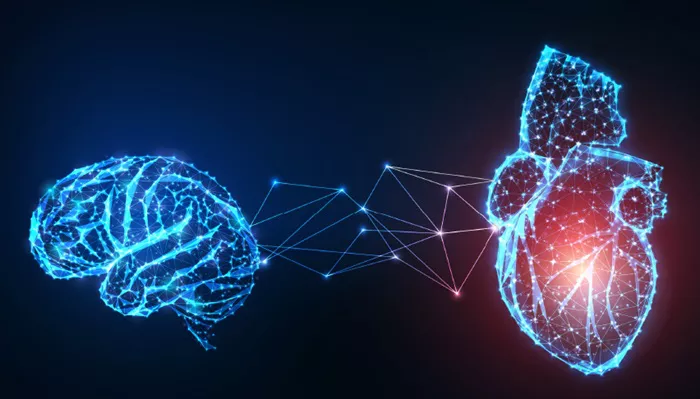Orthostatic hypotension is a condition where blood pressure drops significantly when a person stands up from a sitting or lying position. This sudden decrease in blood pressure reduces the flow of oxygen-rich blood to vital organs. The result can be dizziness, fainting, and long-term damage if not treated.
This article explores what organs are affected by orthostatic hypotension, and how this condition can impair the function of the heart, brain, kidneys, and more. Understanding these effects is key to preventing complications and improving quality of life.
The Brain: First Organ to Feel the Impact
Reduced Blood Flow to the Brain
The brain is one of the most sensitive organs to changes in blood pressure. When blood pressure drops, the brain may not receive enough oxygen and glucose. This can cause symptoms like:
- Dizziness
- Blurred vision
- Confusion
- Lightheadedness
- Syncope (fainting)
In chronic cases, prolonged insufficient blood flow can lead to cognitive decline. Memory problems, difficulty concentrating, and slower reaction times may develop over time.
Risk of Falls and Brain Injury
When a person faints or falls due to orthostatic hypotension, there is a high risk of hitting the head. This may result in concussions or traumatic brain injuries, especially in older adults.
The Heart: Struggling to Maintain Blood Flow
Heart’s Compensatory Mechanisms
To counter low blood pressure, the heart tries to beat faster. This response is called reflex tachycardia. However, in people with heart conditions or autonomic dysfunction, this response may be impaired.
Over time, repeated episodes of orthostatic hypotension may strain the heart, leading to:
- Increased risk of arrhythmias
- Heart palpitations
- Chest pain or discomfort
- Worsening of existing heart failure
Oxygen Delivery to the Heart Muscle
The heart muscle itself needs oxygen to function properly. If blood flow is reduced due to hypotension, the heart muscle may suffer from ischemia. This can result in angina or even a heart attack in people with coronary artery disease.
The Kidneys: Silent Damage Over Time
Role of Blood Pressure in Kidney Function
The kidneys filter waste and excess fluids from the blood. This process requires steady blood flow. When blood pressure drops repeatedly, the kidneys receive less blood and oxygen.
As a result, kidney function may gradually decline, which can lead to:
- Decreased glomerular filtration rate (GFR)
- Accumulation of waste products
- Electrolyte imbalances
- Chronic kidney disease (CKD)
Renin-Angiotensin System Activation
The kidneys attempt to raise blood pressure by activating the renin-angiotensin-aldosterone system (RAAS). While this may help temporarily, overactivation can contribute to fluid retention and high blood pressure, causing a vicious cycle.
The Eyes: Vision Problems and Retinal Damage
Blurred or Tunnel Vision
The eyes require constant perfusion to function properly. Orthostatic hypotension can lead to visual disturbances such as:
- Blurred vision
- Dimmed or tunnel vision
- Temporary blindness upon standing
Retinal Ischemia
In rare but serious cases, low blood pressure can reduce the oxygen supply to the retina, causing retinal ischemia. This may result in long-term vision problems or permanent damage.
The Lungs: Oxygen Exchange and Circulation
Impact on Breathing and Oxygen Saturation
Though less common, some individuals with orthostatic hypotension may experience shortness of breath. This is more likely if the lungs receive less blood for gas exchange.
In people with existing lung disease or heart failure, this drop in blood flow can:
- Lower oxygen saturation
- Increase breathlessness
- Cause fatigue during exertion
Digestive System: Reduced Blood Flow to the Gut
Slower Digestive Function
The digestive tract also depends on good circulation. Orthostatic hypotension may reduce blood flow to the intestines, leading to:
- Constipation
- Bloating
- Loss of appetite
- Nausea
Malabsorption Risk
In chronic cases, poor blood supply can reduce the intestine’s ability to absorb nutrients. This may result in malnutrition or vitamin deficiencies.
Muscles and Extremities: Weakness and Fatigue
Decreased Perfusion in Limbs
Muscles require blood to receive oxygen and remove waste. Low blood pressure reduces this flow, particularly to the arms and legs. Common symptoms include:
- Muscle cramps
- Weakness when standing
- Fatigue
- Cold hands and feet
Autonomic Nervous System: Core of the Problem
Autonomic Dysfunction and Organ Regulation
Orthostatic hypotension is often caused by autonomic nervous system dysfunction. This system controls involuntary actions like heart rate, digestion, and blood pressure.
When the autonomic system fails, organs do not get the right signals to adjust blood flow during position changes. This makes blood pressure drop even more significantly, affecting all systems described above.
Common Causes of Orthostatic Hypotension
Primary Conditions
Several medical conditions are known to cause orthostatic hypotension, including:
- Parkinson’s disease
- Diabetes mellitus
- Multiple system atrophy
- Peripheral neuropathy
Medication-Induced Hypotension
Certain drugs can lower blood pressure too much, especially:
- Diuretics
- Beta-blockers
- Vasodilators
- Antidepressants
How to Protect Organs from Damage
Lifestyle Modifications
Simple steps can help reduce the frequency and severity of blood pressure drops:
- Stand up slowly
- Drink more water
- Eat small, frequent meals
- Wear compression stockings
Medical Treatments
In more serious cases, doctors may prescribe medications such as:
- Fludrocortisone – increases blood volume
- Midodrine – raises blood pressure
- Droxidopa – supports nervous system signals
When to See a Doctor
If you frequently feel dizzy, faint, or experience vision problems after standing up, seek medical evaluation. Prolonged orthostatic hypotension can damage organs over time. Early diagnosis and treatment are crucial to avoid complications.
Conclusion
Orthostatic hypotension is more than a moment of lightheadedness. It affects multiple organs by reducing blood flow and oxygen supply. The brain, heart, kidneys, eyes, lungs, muscles, and digestive tract can all suffer if the condition is left untreated. By recognizing the symptoms early and seeking care, patients can protect these vital organs and maintain a better quality of life.
Related topics:


